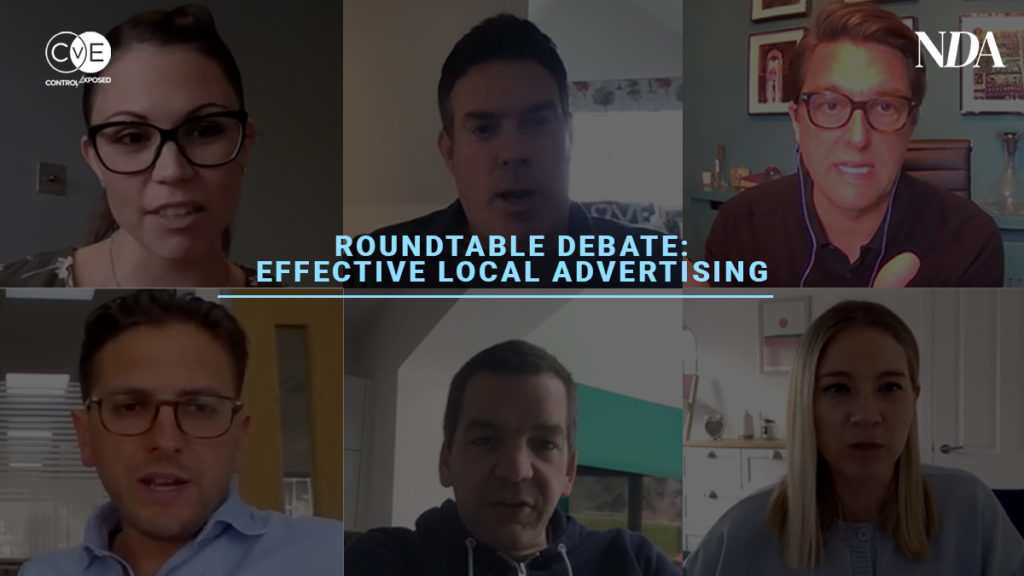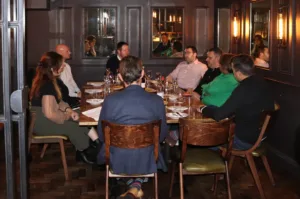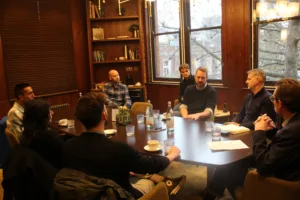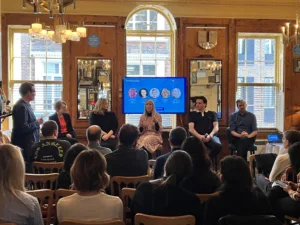New Digital Age, in association with Control v. Exposed (CvE), recently hosted the second in a series of roundtables with marketing professionals to discuss the increased role of local marketing in a post-COVID world. NDA Editor Justin Pearse and CvE’s President in Europe & Asia, Paul Frampton, were joined by: Ben Carter, Chief Marketing Officer at Purplebricks; Emilie Mouquot, Customer and Growth Director at Not on the High Street; Luca Massei, UK Marketing Director at Piaggio Group; Tony Miller, Marketing Director at WW (formerly Weight Watchers); and Holly Heslop, Senior Marketing Manager at John Lewis.
Over one year on from the beginning of the COVID-19 pandemic, there has been a huge impact on a number of industries, with many having to completely change the way they operate. For the marketing industry, there has had to be an adjustment to the way consumers are reached with many of us forced to stay home for much of the past year and, as such, there has been an acceleration of growth across ecommerce and the wider digital space. At the same time, a less-widely spoken about shift has been the increase in connection with our local communities and surroundings.
“The reality for us is that each of our shops are unique and so are the cities and towns they’re located in,” said Holly Heslop, Senior Marketing Manager at John Lewis. “We’re lucky that our Partners in store maintain a personalised relationship with their customers – but the challenge is, is how can we translate that into marketing?”
“We launched a social media programme in 2018 where we train and empower Partners (employees) to act as brand advocates on Instagram. We give Partners the reins to curate their editorial view with expert Partners creating content focussed on different areas, including Personal Stylists (E.g. @johnlewis_victoria), Home Designers (e.g @johnlewis_wil) and Beauty Advisors. We’ve worked with them to build up their own accounts, said Holly Heslop, John Lewis. “They’re becoming local influencers in their communities themselves. But we’re also using their user-generated content on a national scale as well, so it’s a really nice hybrid.”
This greater recognition of local has meant brands have had to take action and find ways to engage consumers closer to home. We sat down with our experts to discuss some of the things they have done and the trends they are seeing.
“There’s a massive opportunity for us to become more locally centric, both in terms of tapping into our local estate agents and talking as a local brand,” said Ben Carter, Chief Marketing Officer at Purplebricks. “Post-COVID, community is going to begin to become even more important and we have to make sure we’re seen as part of that community, as opposed to a faceless digital brand.”
This point was reiterated by Not on the High Street’s Customer and Growth Director, Emilie Mouquot, who said: “Throughout the pandemic, the feeling of supporting local communities and local businesses has increased significantly.”
Keeping things in balance
Though it’s important for brands to become part of the local communities they have a presence in, it’s equally important for them not to completely neglect wider national or international marketing activity.
“We’re interested in, even before the pandemic and everything else, what is the right balance between national and local, and how do you use feet on the ground, technology, or a combination of both to be relevant locally while having your national brand presence,” said Paul Frampton, CvE President in Europe & Asia.
“We’ve developed a bunch of technology that does things to help you enable local store owners, brand managers, dealers, marketing managers to actually run digital activity on a local level, but have it laddered up to HQ.
“We’re just fascinated by that whole dynamic of how you balance local and national.”
For some, like the Piaggio Group, for instance, finding this balance has been more about bringing a digital strategy closer to a local strategy, rather than thinking too hard about the national elements.
“We used to have national marketing from our brand and then local marketing activities were carried out by our network of dealers. The challenge now is to merge local network of dealers with our digital advertising strategy,” said Luca Massei, UK Marketing Director at Piaggio. “In the motorbike industry, we’ve always been used to having a local network because our stock of motorbikes is located locally. The difference in the last year is that the local physical experiences have had to be transferred into digital experiences.”
Very social
In the past year particularly, social media has proved to be the most effective way for brands to continue reaching consumers and, in turn, enabled brands to engage with these consumers at a more local level.
For WW, using social meant continuing to let its already community-based audiences know that they’re still able to connect with the brand on that local level.
“Social has been the most successful channel for us in the past year, in terms of how we’ve been able to get into the regional areas and show them that we are still there and we are still local, even though it was a virtual connection,” said Tony Miller, Marketing Director at WW.
“We have a handful of what we call ‘PR champs’ and ‘social champs’ that we utilise on the ground, who are our coaches that reach out to their own Facebook communities and social groups to carry on that brand message and the conversation. These employees are the ones that our consumers see as the brand through our workshops and that’s what they relate to, so we have that personal connection that we rely heavily on.”
And this ‘in-house influencer’ approach is something that John Lewis has also used to connect with its customers locally.
“We’ve launched a programme called ‘We Are Partners’. So, if you at #WeArePartners on Instagram, all of our expert personal stylists, home designers, we’ve worked with them over the last few years to build up their own accounts, said John Lewis’ Heslop. “They’re almost becoming local influencers in their communities themselves. But we’re also using their user-generated content on a national scale as well, so it’s a really nice hybrid.”
Reassessing your options
All things said, what COVID has definitely done is force brands of all sizes to take a closer look at the processes across their entire businesses and to find new ways of continuing to reach consumers. And a big part of this just so happens to have been reaching these consumers at a more local level.
Nonetheless, beyond the pandemic, this shift of sentiment towards locality – which had been on its way even before COVID – is likely to continue for the foreseeable.
CvE’s Frampton said, “There’s been an acceleration of reassessment and people are thinking, ‘okay, we were doing it this way but everything’s changed. There’s nothing that is sacred anymore. Why don’t we actually think about transforming this entirely or looking at an entirely different scenario?’
“Local is difficult. If you’re got lots of locations then, to do it well, you need either feet on the ground or you need some technology that enables you to do it well. That’s the reason why it’s difficult to create local communities,” he continued.
“I think it’s about balance. Things were maybe a little bit too nationally driven because corporates tend to find the most efficient and simple way to do things as opposed to trying to crack the complexity. But I think technology and this almost permission that COVID has given us is leading to some reassessment about the role local marketing plays.”









